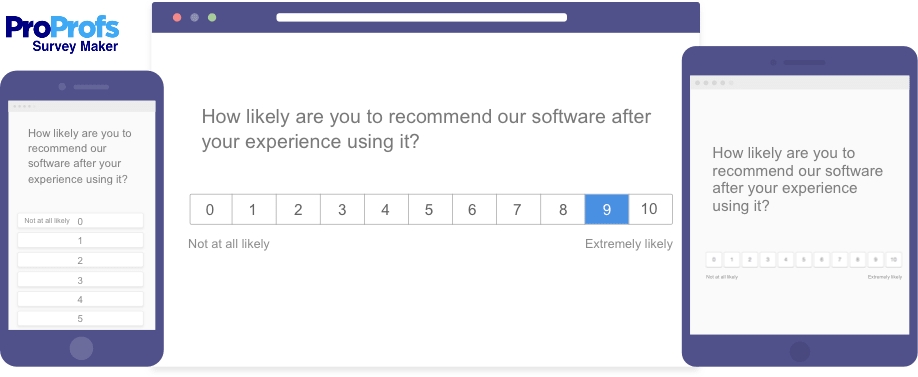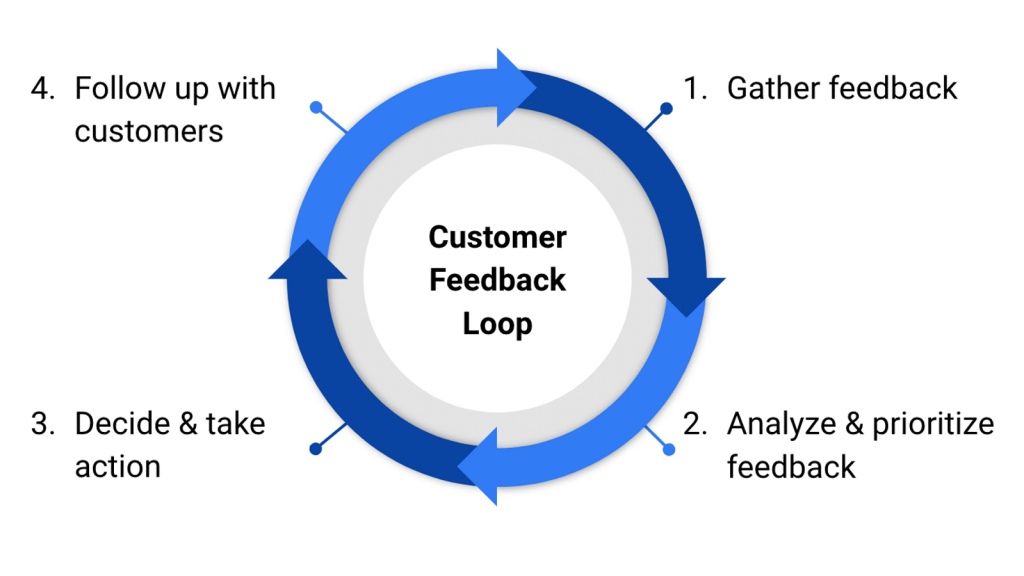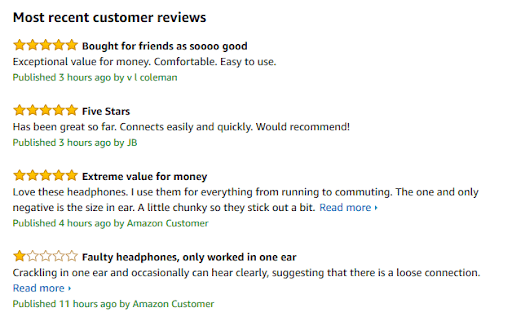Do you wonder why some customers stick with you for years, while others leave you midway?
Well, customers are giving you hints all along. In fact, 56% of consumers around the globe believe that companies need to take necessary action on the feedback provided by them.
Your customers have a lot to say. The only question is, are you ready to listen?
Voice of Customer (VoC) is an important tool that helps you gauge your customer sentiments and their overall experience with your brand. When done right, it can help you see if your business is succeeding or failing in its CX efforts.
But there is a lot more to the voice of the customer programs than simply sending out a survey.
In this blog, we will discuss the benefits of VoC, explore some challenges you need to overcome, understand the role of customer support software in capturing customer feedback, and most importantly – we will explore 5 strategies to improve your VoC programs.
Here we go!
What Is Voice of Customer (VoC)?
Voice of Customer (VoC) refers to the process of collecting customer feedback about a business, its products, and services. The gathered data is then consistently used to improve the customer experience.
For the voice of customer analysis, data is collected from customer service interactions (live chat, email, phone, video conferencing, etc.), customer satisfaction surveys, online reviews, social media groups, community forums, etc., to better understand the relationship they share with your brand.
Now, VoC can be both positive as well as negative. In fact, negative customer feedback can help you see improvement areas that you had earlier missed. Fixing these areas over time will lead to better product development and enhanced customer experience.
What Are the Benefits of Voice of Customer?
Customers love brands that value their opinions. In fact, according to a Microsoft study, brands are viewed more favorably by 77% of consumers if they proactively invite and accept customer feedback.
- Improve Your Customer Service Quality
Customer service is definitely one area that works for the well-being of the customers.
But what if customers are not satisfied with your service? What if they are not able to find relevant help articles in your knowledge base? What happens when they have to wait for long minutes in the phone queue before they are connected to an agent?
Successful brands such as Amazon, Zappos, Uber, etc. are always capturing customer feedback to improve their customer service. Sharing surveys right after a customer service interaction can help you monitor customer satisfaction. Furthermore, customers can also shed light on how friendly, attentive, or knowledgeable your agents are in their interactions.
- Steer Product Development Efforts in the Right Direction
Most businesses have an expert product team that works day in and day out to produce the best products their audience has ever seen.
But what if your team is working on a product feature that is not even desired by your target audience? What if the design of your product does not appeal to your target audience?
For superior product development, you need to take customer opinions and feedback into account. Voice of the customer data will help you realize what features your customers want and how much they are willing to pay for these new developments.
- Research Your Target Market
Before exploring the depths of any market, you need to conduct thorough market research.
Market research will help you understand the demographics, needs, shopping behavior, and preferences of your target market.
But doing your research solely based on what information is already available is not enough. You need to directly or indirectly interact with your potential consumers and see what they really want and whether your product will solve their needs.
For instance, you can share surveys with potential customers asking them whether they prefer online or offline shopping. Based on the captured data and analysis, you can make relevant investments in opening an e-commerce or brick-and-mortar store.
- Identify At-Risk Customers
Every business has customers who are almost on the verge of leaving them. It could be due to a variety of factors such as poor customer service, high prices, ineffective products, unfriendly staff, and more.
Whatever the underlying causes are, the voice of the customer can help you identify your at-risk customers. In fact, if done right, you can make necessary adjustments just in time to prevent customer churn and avoid negative word of mouth.
You can use NPS surveys to understand how likely customers are to recommend your brand to others. The responses will help you identify your ‘promoters’ who are loyal to your brand and actively promote your business to potential customers.
What Are the Key Challenges of VoC Programs?
Building a voice of customer program might sound easy, but it is not child’s play. Let’s look at some of the most popular roadblocks to a successful VoC program:
1. Lack of Senior-Level Involvement
One of the biggest challenges to VoC programs is the lack of engagement and support from senior leaders. While senior members can ‘yes’ to conduct the programs, they must be passionate about the same and should highlight why it’s important. All senior leaders and managers must guide their respective team members about how to make the best of customer data.
2. Unclosed Feedback Loop
Most companies make this mistake – they collect customer feedback but never act on it. Even if they implement a customer suggestion, they do not inform the customers about the same.
The truth is that just creating a halfhearted voice of customer report is not good enough. The main goal should be to use the data to your advantage, make necessary changes, and tell customers how your business is improving with the help of their valuable feedback.
3. Lack of Incentives for Customers
While surveys are usually not painful to complete, but they can feel quite burdensome when customers are asked to share their feedback every now and then. Lack of incentives can make your customers quickly lose interest in your feedback process. As a solution, you can encourage customers to write reviews, complete surveys, etc. in return for discounts, free complimentary products, or other exclusive benefits.
How to Improve the Voice of the Customer Program
To become a truly customer-focused business, you need to deploy your VoC program in all aspects of your business – marketing, sales, product research, product development, and customer service.
Here are 5 robust tips to make the most of your voice of the customer strategy:
#1. Understand Your VoC Goals
Many businesses make the mistake of embarking on a journey with no idea of the destination. They want to be known as a brand that values customer feedback but have no idea where to start.
To run any successful programs, you need to know your “WHY”. Before you even begin asking your customers, start asking yourself- “Why do we want to capture customer opinions and feedback?”
For a start, you can sit with your experts and jot down all important questions that you wish to solve with your voice of the customer program.
- What all benefits can our business achieve with our VoC efforts?
- How can we capture the opinions of our potential customers?
- Which tools will we use to capture customer feedback?
- How will we use the data to improve the customer experience?
- How often should we survey customers without making it a cumbersome process?
The answers to these above questions will help you set foot in the right direction. You will know exactly what to expect from your program and how you can bring it to life.
#2. Leverage Both Relationship and Transactional Surveys
Customer experience surveys can be divided into two broad categories: relationship and transactional. While a relationship survey measures how your customers feel about the overall brand, products, or services, transactional surveys capture customer feedback on specific interactions.
Net Promoter Score (NPS) surveys that help you measure customer loyalty are great examples of relationship surveys. On the other hand, Customer Satisfaction (CSAT) and Customer Effort Score (CES) surveys are transactional surveys.
Relationship Survey- NPS

For a successful voice of customer process, you can use relationship surveys to see the bigger picture. You can easily see how customers perceive your brand and whether your business is able to meet your long-term goals or not.
Transactional Survey- CSAT

Transactional surveys can help you measure your day-to-day performance. For instance, you can share a CSAT survey with your customer right after a support interaction and allow the customer to rate their experience. Such ratings will help you identify agents that are performing well and those who need further training.
Read More: 15 Help Desk Metrics to Improve Customer Support
#3. Close the Customer Feedback Loop

For any customer-focused business, closing the customer feedback loop is just as important as collecting customer feedback, if not more.
According to a Gartner report, around 95% of companies claim they actively collect customer feedback. However, only 10% of them actually leverage it to improve their product or service.
If you look closely, you will realize that the customer feedback collection process is like a cycle. You gather feedback from customers, analyze the feedback, take action, follow up with them, and repeat the same all over again.
There is no point in collecting huge chunks of data if you are never going to act on it. Here are some strategies to successfully close the feedback loop:
Use the Right Tools: Tools such as help desk software can store all customer conversations in one place. Moreover, you can share automated surveys (CSAT, NPS) with customers to measure and improve the customer experience.
Take Action: Prioritize feedback and take necessary actions. For instance, if multiple customers have requested a new product feature, ask your product and design teams to make it happen.
Appreciate Your Customers: Just an automated message “Thanks for your feedback” is not enough. Give some customers a call and personally thank them for taking time out for your survey. As a voice of the customer best practice, keep customers looped in the actions that your business is taking based on their feedback.
#4. Make Sure Employee Voices Are Also Heard
While it’s great to listen to your customers, you must not shy away from the idea of lending an ear to your employees. After all, employees are your frontline warriors who are directly engaging with customers.
Employees who use your product or service can provide direct feedback about your brand offerings. They can also provide indirect feedback by telling you whether customers are appreciating your products or not.
Moreover, to enhance the VoC experience, train your employees on listening skills so they can pay adequate attention to customers. Irrespective of the communication channel (phone, live chat, video, etc.) customers will always feel heard. Also, rather than judging customers for their opinions, teach employees to show empathy and understand the reason behind their frustration.
Read More: 31 Important Customer Service Skills
#5. Share Customer Success Stories
All successful brands are storytellers. They make sure their success stories are heard by as many people as possible.
For instance, if Zappos is known for great customer service, a lot of credit goes to its loyal customers. But besides that, even the company knows how to advertise its strengths. This is evident in their tagline- “Delivering WOW through service”
When it comes to listening to customers, Zappos employees are ready to go the extra mile.
We all have heard a record customer service call, handled by Steven Weinstein, that lasted for 10 hours and 43 minutes.
So many people know about this fantastic feat because Zappos was quick to release a video and a blog showing everyone how much it cares about customers.
The lesson here is that your business needs to share customer success stories on social media, website, or online community forums. Even a 2% improvement in your average first response time shows how your business is quick to listen to customers and this news is definitely worth sharing.
Voice of Customer Examples From Real Brands
The voice of the customer examples are crucial for businesses that are struggling to implement it in their process. Here are some examples of real brands to get you inspired:
Subbly Uses VoC for SaaS Refinement

Subbly is a popular e-commerce platform that allows businesses to offer a subscription or membership model to their customers. With features such as an order management system, exporting, and more, anyone can run their own subscription box business.
For capturing the voice of customers, Subbly has created a dedicated customer feedback page. Moreover, Subbly runs multiple surveys on their pricing page. These surveys ask visitors whether they would prefer higher monthly subscription fees and lower transaction fees, or lower monthly subscription fees and higher transaction fees.
This data helps proves to be pivotal in evaluating their product pricing. The company even uses its Facebook group to capture feedback from its target audience.
Amazon Prioritizes Products With Great Customer Reviews
Amazon is the world’s largest online retailer brand with a trillion-dollar market cap. One of the major reasons behind this unprecedented success can be attributed to its unshakable focus on the customer.
Amazon’s search algorithm takes reviews and ratings into account while displaying products in the search results. This means that products with genuine and great reviews will rank better.

We all know that modern customers rely heavily on reviews when buying anything online. Therefore, in its attempt to maintain the quality of reviews, Amazon has banned sponsored reviews. The company even made a statement that sellers who are found encouraging fake reviews or ratings will be banned from selling on the e-commerce store.
Empower the Voice of the Customer
The voice of the customer (VoC) has become an effective tool that helps you monitor your customer experience. It can help you improve your customer service quality, enhance product development, and identify your at-risk customers.
Your customers drive your business forward, one transaction at a time. Lending an ear to them will never go out of fashion.
Each interaction, survey, or review is powerful enough to offer you unique insights into your customers’ sentiments and behavior. Always remember to involve the senior management, close the feedback loop, and share incentives with customers for a successful voice of the customer program.
Learn More About Voice Of Customer
How can any company improve your customer experience?
Customer experience has become one of the most important brand differentiators. Here are some strategies to improve your customer experience:
- Create an omnichannel strategy to enhance the customer experience
- Encourage self-service using a dedicated knowledge base
- Create a solid voice of the customer program
- Train your employees to make every interaction count
- Foster a robust customer-centric culture
What are the most common methods to gather VoC?
Every modern business needs to capture customer feedback and opinions at regular intervals. Here are some popular methods of gathering VoC data:
- Customer satisfaction surveys
- Social media interactions and discussions
- One-on-one customer interviews
- Online reviews on your website, community forums, etc.
- Net Promoter Score (NPS) surveys
Should an organization always try to satisfy the voice of the customer?
Customers can have different expectations from your brand. However, when such expectations get unrealistic, you need to politely say no to them. For instance, let’s say a customer shares that he likes your product but wants a 50% discount. In this case, satisfying the customer and fulfilling their unrealistic expectations may not be financially feasible for your organization.
Do customers want to share their feedback and opinions about a brand?
Yes, customers are always sharing their feedback and opinions about a brand with their friends or family members. However, if your business wants to gather customer feedback, you need to share surveys, forms, etc. with your audience from time to time. However, you also need to keep in mind that not all customers will feel comfortable sharing their feedback with you and you need to respect that.
FREE. All Features. FOREVER!
Try our Forever FREE account with all premium features!








